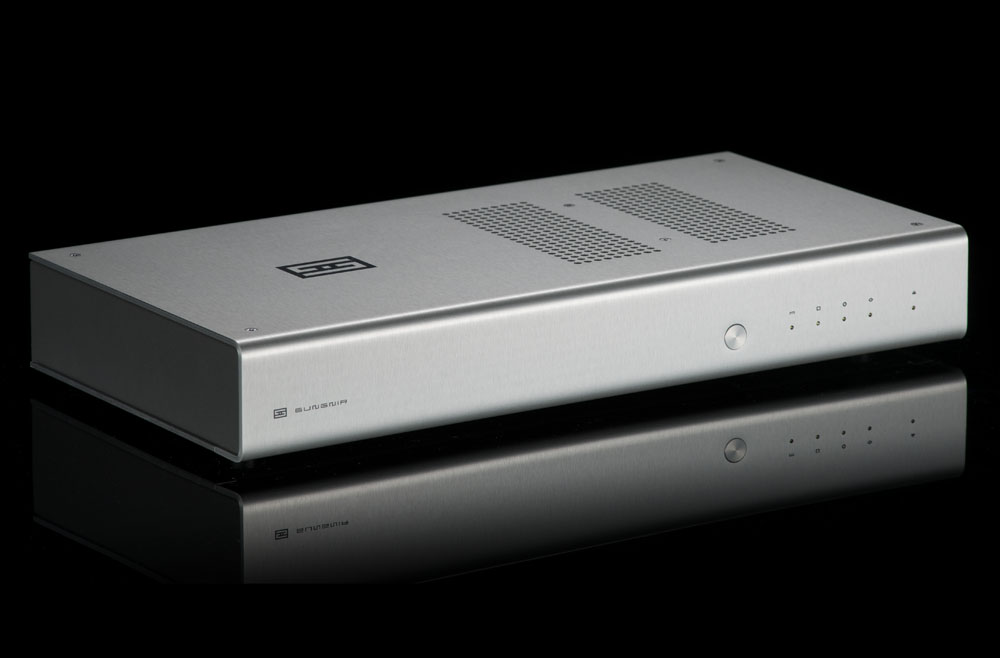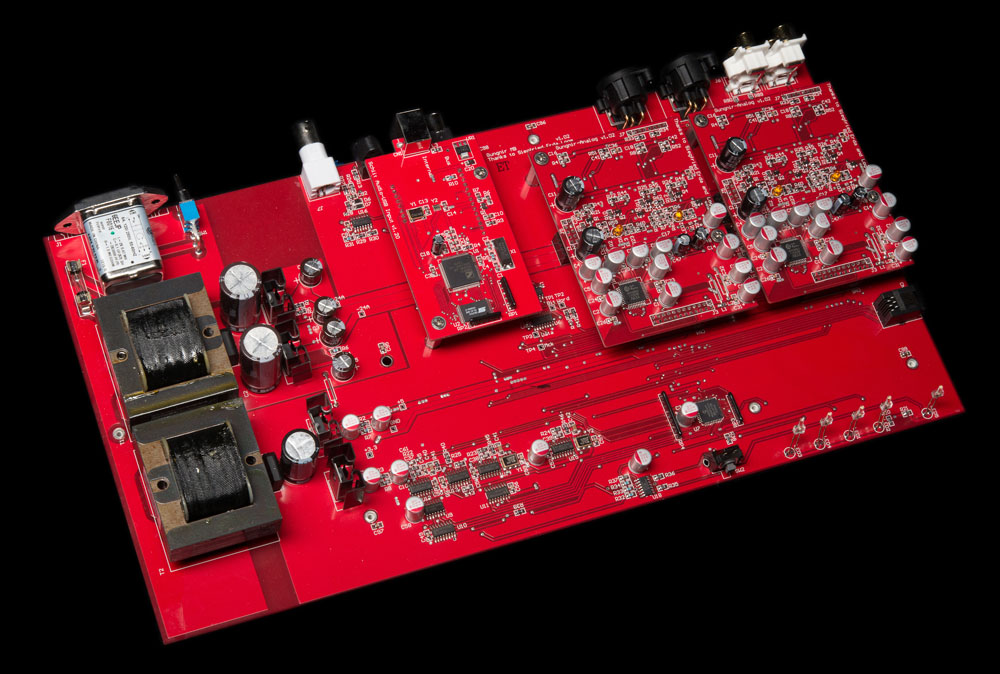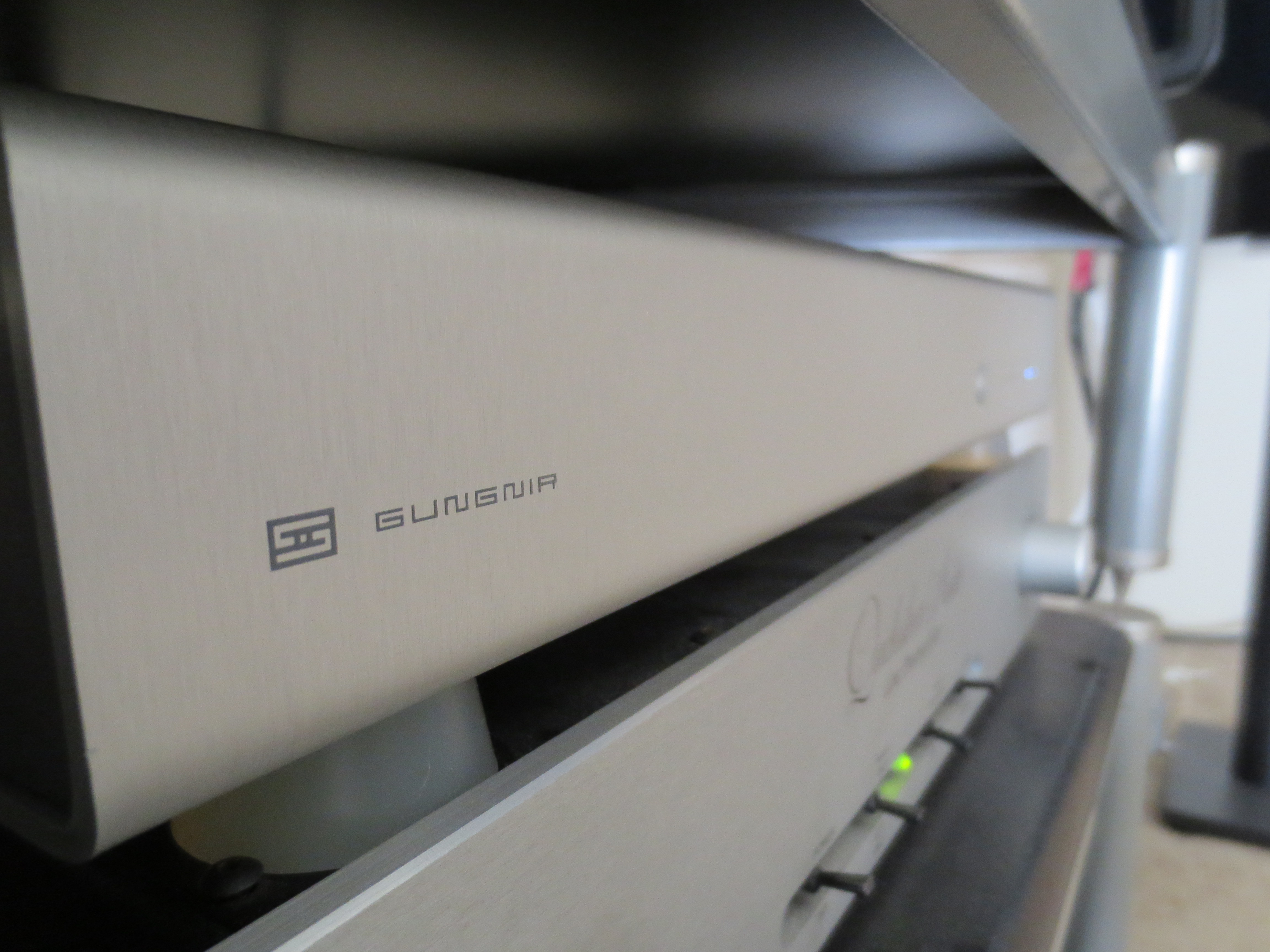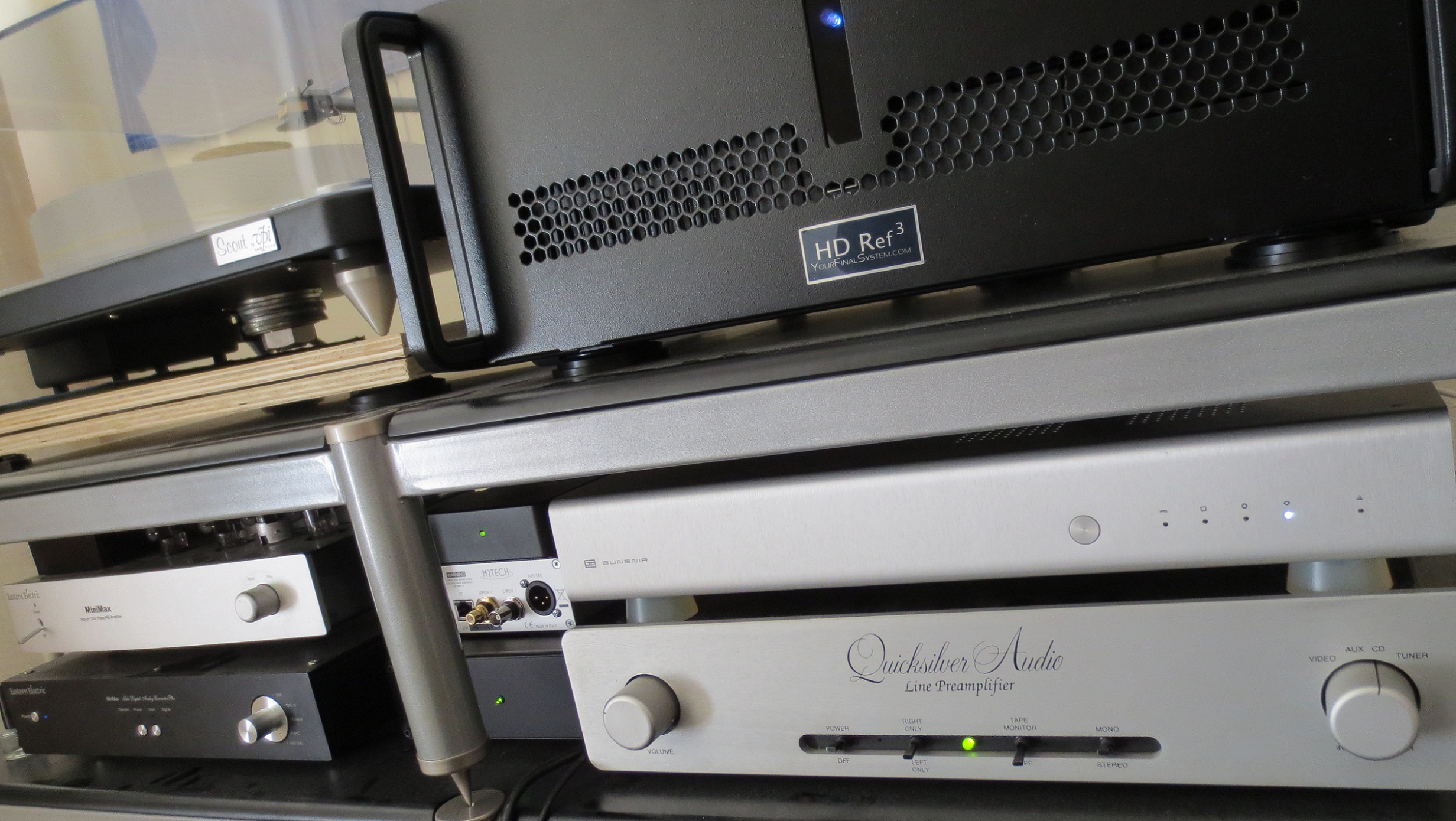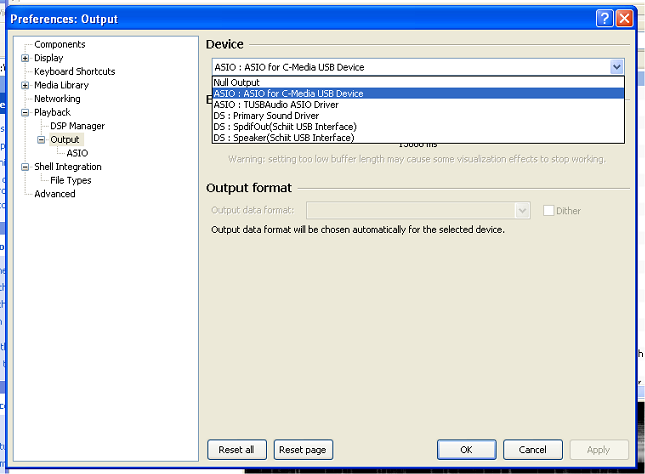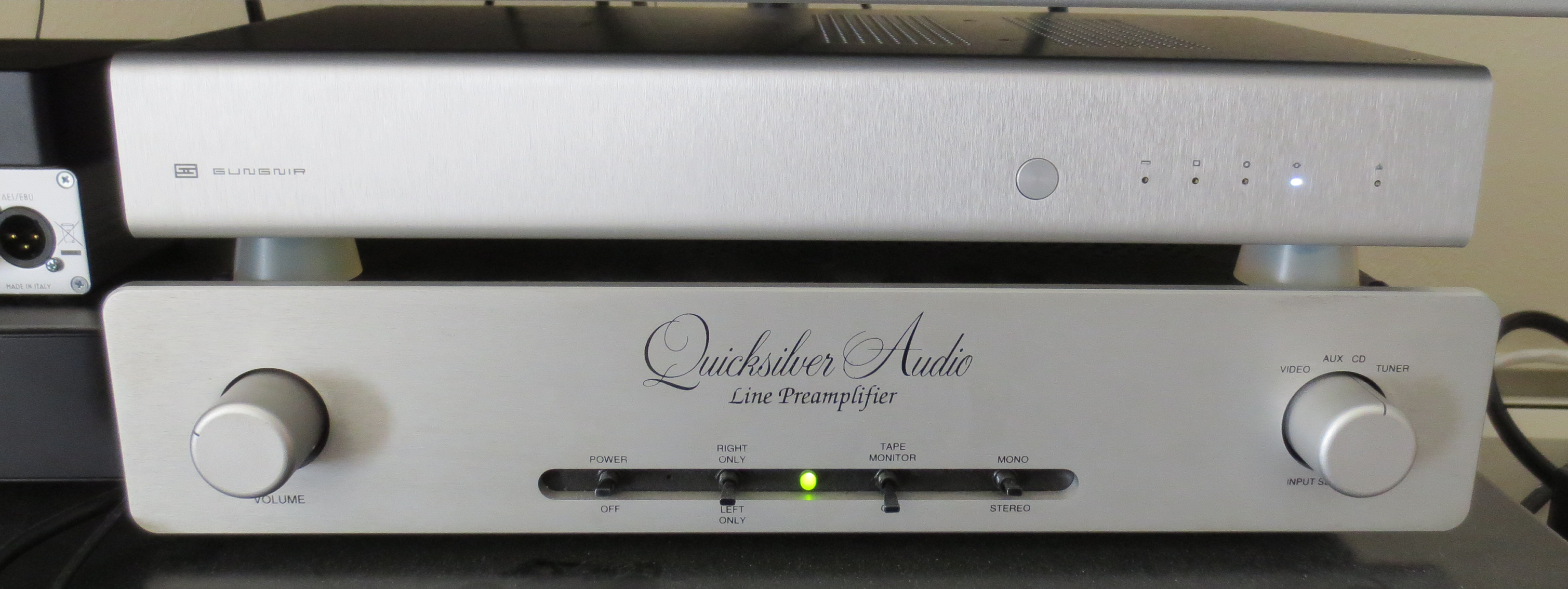by Kevin OBrien on April 12, 2013
SCHIIT GUNGNIR USB DAC REVIEW
Schiit. We didn't believe it at first but it's true... Schiit Audio has something here. With all the buzz going around concerning the Schiit Gungnir USB DAC, we couldn't resist getting our hands on one and finally put the madness to rest. Looks like we're really knee-deep now... No turning back!
Yes, that's their name and they're out of California. Right outside of Santa Clarita to be exact. All their products are made in the USA and carry a 15 day in-home trial period and a 5 year warranty. We first got wind of them when their little USB DAC, the Bifrost, hit the market. Everybody was raving about the sound for the money and it caught our attention briefly until we looked at the price. We weren't going to bother with a $450 USB DAC, right? Well, maybe...
About 6 months ago Schiit came out with their latest achievement, the Gungnir USB DAC, which caught our attention once again but this time for good. It appears they have been up to no good and have a little surprise in the form of a USB DAC for about twice what the little Bifrost goes for. Hmmm? This could be interesting.
The real story lies in what Jason and Mike of Schiit have termed the "Statement DAC". This DAC, still in its design stages, should be an all-out assault on the high-end DAC market according to Jason. Unfortunately, this piece of special gear won't be available for a while. Not at least until closer to the end of 2013. This is the DAC we've been waiting for that should handily out perform ANYTHING anywhere near $1700. You may ask yourself, why would someone take another person's word for anything these days? Not a bad point. We wouldn't be saying all this if we hadn't heard the Gungnir USB DAC. Can you tell where we're going with this?
Well, we heard the Gungnir USB DAC and we felt impelled to write about it. The unit itself weighs in at ~10 pounds and has a brushed aluminum faceplate and chassis in a silver/ gray finish. We really dig the way it looks. It's fairly compact too with a faceplate measuring just over 2". The unit employs the C-Media CM6631 USB input chip which is completely original to us. We're familiar with the USB input chips from the likes of XMOS, Tenor as well as OEM input boards from M2Tech but we've never heard of C-Media. The Windows 7 driver is downloadable from Schiit's website here. (Win 7 as well as XP, Vista, Win 8, and MAC OS are supported) The crucial part is that ASIO drivers are embedded in the C-Media USB drivers similar in fashion to the XMOS Thesycon USB drivers. This is very handy when setting up the DAC with Album Player and makes achieving bit-perfect playback a breeze.
Any drivers needed are packaged together in one compressed folder on Schiit's website. Double-click the "setup.exe" file within the unzipped folder after download to automatically let the installer choose your correct drivers. This all happens after you plug the Gungnir into your server via USB. Your server will want to "see" the device before proceeding with the driver install.
If you're intent on using a SPDIF converter instead of a USB input directly on the DAC, don't worry. You can order the Gungnir without the USB input for $100 less. Schiit sells the USB version of the Gungnir internet-direct at $850 and the non-USB version at $750. Not bad at all considering the Gungnir's performance which we will get to momentarily.
The Gungnir employs two AKM4399 DAC chips which handle the actual digital to analog converting duties. The really cool part is that the analog output stage is all discrete! That's right. You won't find a single opamp in the output stage, period. This type of design is VERY unusual for a DAC at this price point. There is no remote or volume control and there shouldn't be for this price. A volume control is always tricky and could degrade the signal if not implemented properly anyway. This unique piece of gear has four digital inputs on the rear panel along with the on/off switch and IEC power connector. USB, BNC, COAX and Toslink make up your digital input options. We love the fact Mike and Jason included the BNC input! The Coax input brings jitter along with it and we've noticed BNC provides a much better transfer method for digital signals. We hooked the Gungnir up to our April Music Stello U3 to test out the digital inputs with digital signals ranging from 16/44.1 all the way up to 24/192 with no issues whatsoever. Nice work guys!
We did install the C-Media software for the USB digital input and we wanted to share with our readers what the ASIO control panel and the C-Media USB device look like within Foobar. The shot below shows the C-Media device within Foobar under "Preferences" -> "Playback" -> "Output" menu. Make sure to select "ASIO: ASIO for C-Media USB Device" as your output sound device in whichever software you decide to use. Foobar 2000 is shown below. Notice the "TUSBAudio ASIO Driver" in the menu as well. This is the device we select when we want to use our Stello U3 SPDIF converter as our USB interface between our YFS HD.Ref-3 SE server instead of the Gungnir DAC. Schiit made a design decision to implement the 5 volt USB power bus to power the C-Media CM6631 input chip. We think this was a great decision because it allows us to use our YFS 'Split' Ref USB cable and our YFS PS-5 power supply to boost the Gungnir's performance just like we do with the XMOS chip. Let's hope they keep this exact same scenario for the USB input on the Statement DAC. Hint, hint guys...
We have attached a shot of the ASIO Control Panel below. The ASIO 2.2 drivers come embedded within the C-Media USB Windows drivers. This is a VERY CONVENIENT way to get bit-perfect playback with ANY server or computer as your transport!!! To get to the screen shot shown below go to "Preferences" -> "Playback" -> "Output" -> "ASIO" menu. Double-click on the "ASIO for C-Media USB Device" heading shown below in the "ASIO drivers" box. The ASIO Control Panel will appear as shown below. Choose your appropriate settings such as 'Bit Depth' and 'Latency'. We went with '32/24 Bits' and '50 ms' for our bit depth and buffer respectively. This is the maximum buffer setting for the C-Media chip. After the above mentioned steps are completed the music should stream to your Gungnir with no issues. If you do not have the most current version of the C-Media USB input module, 24/176.4 files may not work. The other digital inputs will pass 24/176.4 files just fine so no worries there. The 24/176.4 issue was ONLY concerning the C-Media USB input chip and NOT a function of the AKM4399 DAC chips themselves!!! Send Jason an email if your USB input module doesn't pass 24/176.4 files and he'll exchange your module for an updated one. After speaking with Jason we found out an "Official Update" to the USB input module is in the works so it looks like an upgraded USB board will make its debut soon. Look for more information in the VERY near future from Schiit.
Customer service is a TOP priority for Schiit and it shows.
So, how does it sound? We set up a comparison of the Gungnir and the Minimax Plus to see how this Schiit held up against another internet-direct USB DAC. We used the Stello U3 SPDIF converter and ran a YFS XLR digital cable from the U3 to the Minimax Plus. We then ran a Veloce Silverstar 75 BNC digital cable from the U3 to the Gungnir. Both DAC's were hooked up to our Quicksilver 12AX7 preamp via our YFS analog interconnects. This way we could quickly switch back and forth between DAC's with a simple switch of the inputs on the Quicksilver preamp. After comparing the units to one another for several hours we decided the Gungnir was a real winner...
Our Minimax Plus wasn't a run-of-the-mill Minimax either. We decked our Minimax Plus out with four Dexa Discrete Opamps to give us an edge over the stock unit. Our Minimax's output stage was totally discrete now too! We pulled the input tube from the rear of the Minimax and placed it in solid state mode. We wanted the least amount of distortion, the most resolution and the most revealing sound we could get out of the Minimax Plus and this scenario has worked very well for us.
Specifically, how did the two DAC's compare? The Minimax Plus gave us a little more pronounced snare hit and a little more air in the top end of the frequency response compared to the Gungnir. The Schiit DAC had a SLIGHTLY darker, more laid back presentation than the Minimax Plus. The Gungnir still gave us essentially all the detail of the Minimax which was incredible for a DAC in this price class. I'd call the Gungnir's overall sonic signature neutral. The DAC was very responsive to changes in playback software as well as changes in software settings. Foobar 2000 sounded a little more forward and lean with the buffer set over 25000 ms. Album Player as usual sounded more analog than Foobar. The real icing on the cake was the fact that we couldn't tell which DAC we were listening to once we listened for more than a minute or two without looking at our input selector. That's when we stopped the comparison and just started enjoying the Gungnir...
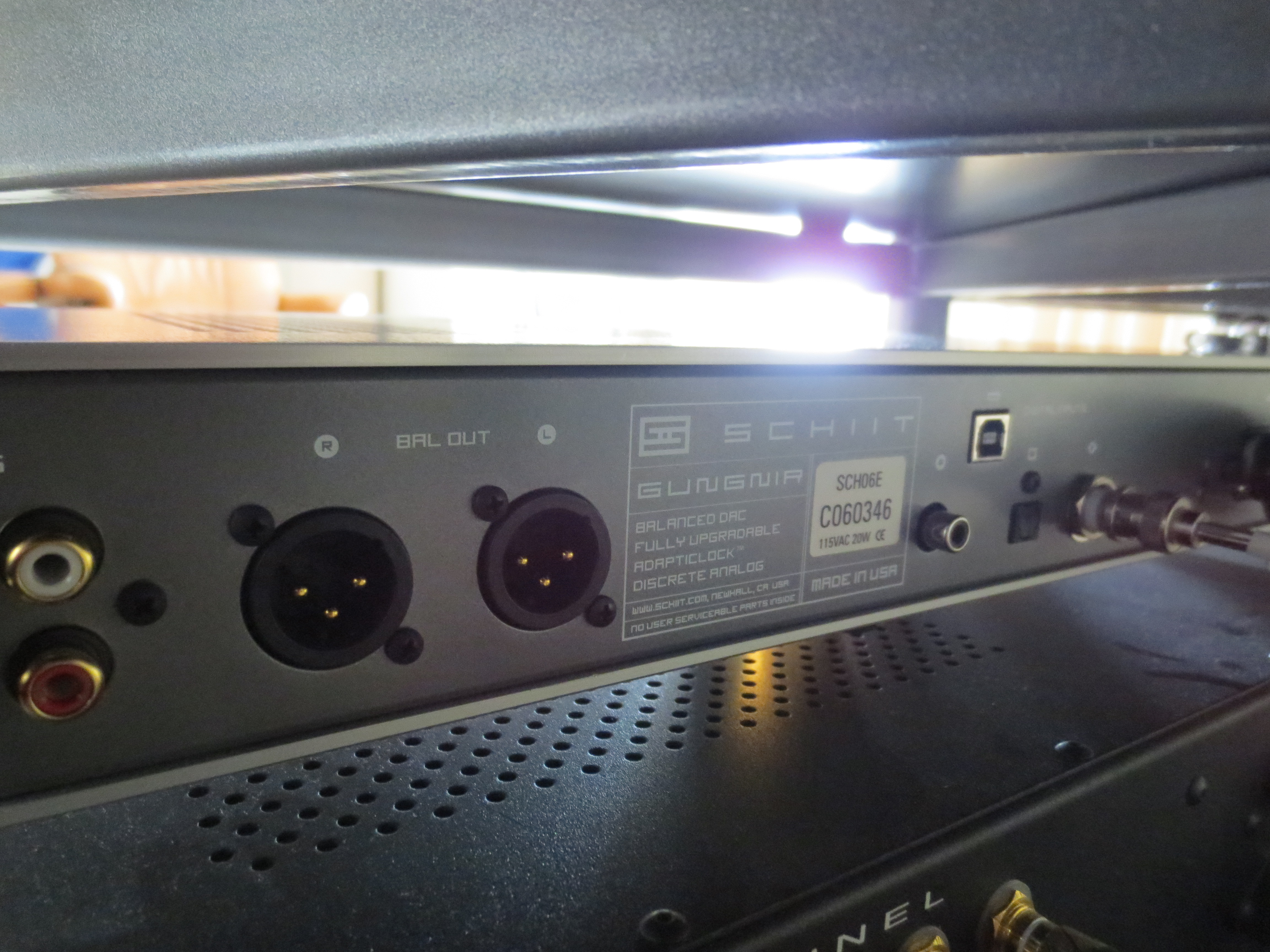
We're not really sure how to put this any more clearly than saying the Schiit Gungnir is the new King of Affordable DAC's!!! There's nothing that can give you all the features and sound quality of the Gungnir for the price! So go out and give this USB DAC a shot and keep in mind the real mind-blowing Schiit has yet to take its full form as the Statement DAC. We'll all have to wait and see what the future holds as far as new Schiit is concerned. Keep on listening and we'll catch up with you all next time.
-YFS Design Team
Associated Equipment:
- YFS HD Ref-3 SE Music Server Transport
- EE Minimax PLUS USB DAC w Dexa Discrete Opamps
- Quicksilver12AX7 Preamp
- Quicksilver S60 Monoblocks
- Von Schweikert Unifield II Speakers
- PS Audio Power Plant P-300 for source gear
- PS Audio Duet Power Center for amps
- YFS Cabling and Interconnects

